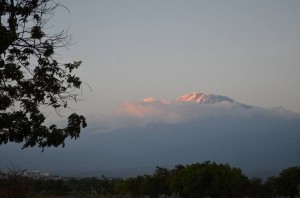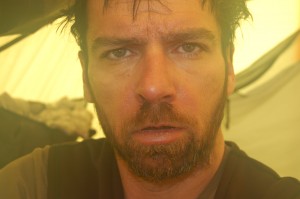Life at high altitude consists of discomfort.
With all adventure travel, discomfort comes in familiar forms, like:
- Achy bones from sleeping on the ground
- Upset stomach from foreign microbes in your gut
- Sore muscles from long hours hiking uphill.
When you add in high altitude impacts, you also get to experience:
- Acute mountain sickness (headache, rapid heart rate & lethargy)
- Tingling lips, fingers and other extremities as a side effect of medicine taken to prevent acute mountain sickness (Diamox)
- Disturbed sleep as your autonomous breathing alternates awkwardly between gasping too deeply, and then too shallow (i.e., Cheyne stokes breathing)
- Vivid, bizarre dreams as your mind struggles to accommodate these new discomforts, low oxygen levels, and a nagging uncertainty about the climb ahead.
Sounds like fun, right? When I share adventure presentations with corporations or associations, some audience member almost always asks: “Why would you go through all that discomfort?
Because, life at high altitude consists of splendor.
Warmth, water and life all become sparser with altitude, and the ecological life zones change as we ascend. During our seven-day ascent of Kilimanjaro, we will walk through five different zones: bushland, rainforest, heath, alpine desert and, finally, the frozen arctic zone at the roof of Africa. If we walked laterally, we would have to cross an entire continent to see such dramatic change. By struggling uphill for a few days, we get to witness and empathize with nature’s amazing struggles to survive.
Hard-to-reach places always afford tenacious visitors with rare experiential gifts. Deserts, jungles and oceans all offer their own unique moments and vistas. High atop mountains like Kili, we see stars burn brightly through the ink-dark sky. We’ll feel icy cold winds cut through four layers of clothing, which invigorates to the core.
Finally, at dawn when the sun floats above the African plains, and life-giving light radiates farther out than our eyes have ever seen before, we will soak the splendor into souls. Jess and I will close our eyes in concentrated effort to lock the majestic view deep in our minds.
René Daumal captured this experience well:
You cannot stay on the summit forever; you have to come down again. So why bother in the first place? Just this: What is above knows what is below, but what is below does not know what is above. One climbs, one sees. One descends, one sees no longer, but one has seen. There is an art of conducting oneself in the lower regions by the memory of what one saw higher up. When one can no longer see, one can at least still know
We endure the temporary discomfort of high altitude life so that we may earn the right to experience splendor that we’ll carry with us for the rest of our lives.
Stay resilient!



Very well said! Keep on climbin~
What is it about climbing mountains? I could read story after story and only hope that someday I’ll be able to climb over 14,000 feet in another country to experience it all myself. Thanks for sharing Jim. I just love reading your blog! Climb on!!! 🙂 Alicia
Keep your big goal foremost in your mind and keep working toward it, and I bet you will indeed expedition climb internationally Alicia!